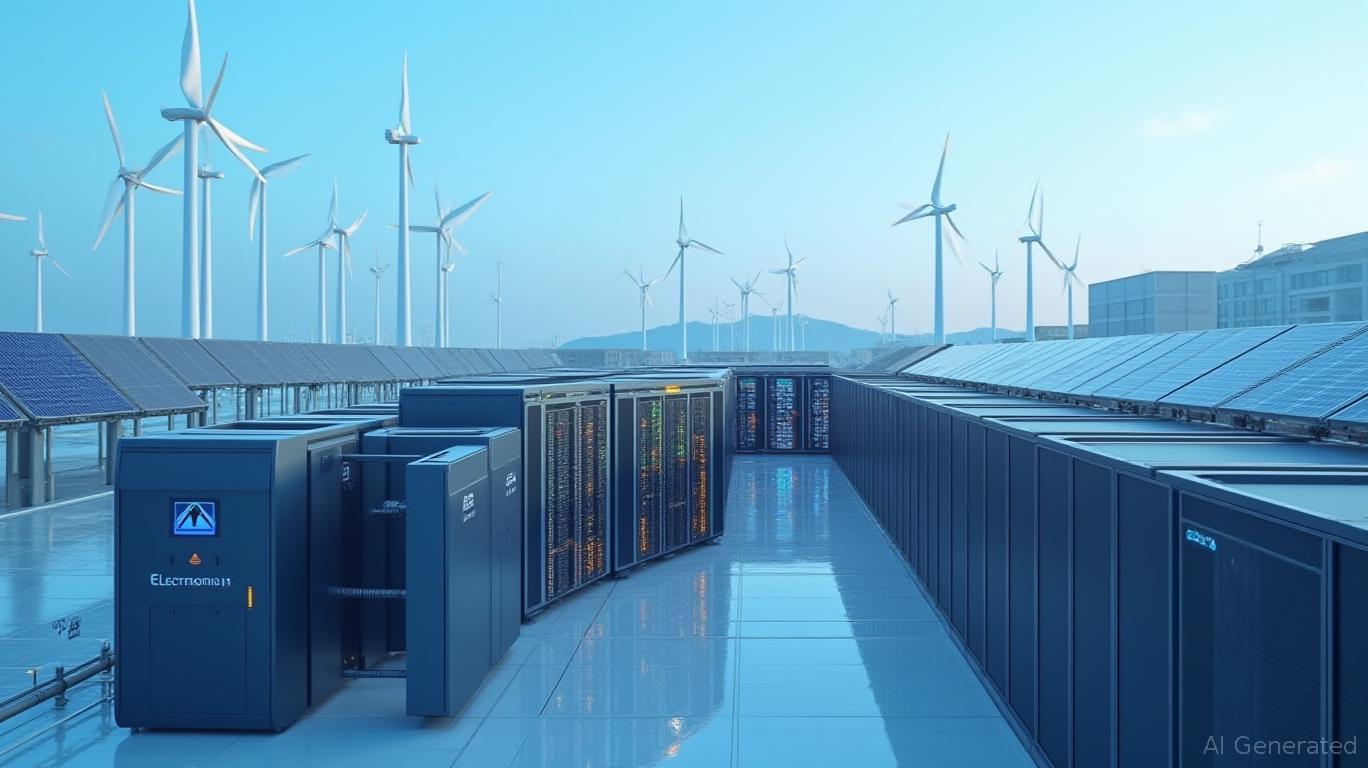Powering the Future: Onsite Solutions as the Key to AI Data Center Efficiency
The rapid growth of AI-driven workloads—training neural networks, real-time analytics, and generative models—is straining data center infrastructure like never before. As AI chips demand ever-higher power densities, traditional grid-based power systems and cooling methods are struggling to keep pace. Enter onsite power solutions: a critical innovation frontier where companies like
, Bloom Energy, and Marvell/Empower are redefining energy efficiency, scalability, and sustainability. For investors, these firms are positioned to capitalize on a structural shift in how the world powers its most compute-intensive systems.
The AI Compute Dilemma: Power Density and Efficiency
AI training clusters now require kilowatts per chip, with GPUs and accelerators drawing hundreds of amps at peak loads. Traditional data centers, reliant on AC power distribution and air cooling, face two existential challenges:
1. Energy Loss: Converting grid AC to DC power for servers incurs inefficiencies, while air cooling struggles with high-density racks.
2. Grid Dependency: Utilities worldwide are struggling to expand capacity fast enough, with delays of up to two years reported in some regions.
Enter onsite power systems, which colocate generation, storage, and advanced cooling directly with compute infrastructure. This reduces reliance on strained grids, minimizes conversion losses, and enables dynamic load management—a must for fluctuating AI workloads.
Delta Electronics: Leading the HVDC Revolution
Delta's high-voltage DC (HVDC) architecture is a cornerstone of modern AI data center design. By bypassing multiple AC-DC conversion stages, Delta's 800V HVDC systems achieve 92% efficiency, a 4% improvement over legacy setups. Their Power Shelf Innovations—such as 180kW AC-DC converters and lithium-ion capacitor-backed Power Capacitance Shelves—deliver clean, stable power to NVIDIA GPUs and other accelerators.
But Delta's edge extends beyond power delivery. Their liquid-cooled busbars and in-rack cooling units (e.g., 1.5MW Liquid-to-Liquid CDUs) enable 200kW+ cooling per rack, critical for next-gen AI servers. Pairing this with microgrids powered by hydrogen fuel cells and solid-state transformers, Delta's solutions reduce total energy use while enabling rapid deployment of edge data centers.
Delta's stock has outperformed the S&P 500 by 25% over three years, reflecting investor confidence in its AI infrastructure plays.
Bloom Energy: Fuel Cells Power the “Always-On” Data Center
Bloom Energy's solid oxide fuel cells (SOFCs) offer a compelling alternative to fossil fuel backup systems. With 60% efficiency and the ability to run on biogas or hydrogen, Bloom's SOFCs provide 24/7 power at a lower total cost than diesel generators. Their modular design scales seamlessly, supporting 200+ kW increments to meet data center needs.
A Bloom Energy Server paired with Delta's microgrid controllers could create a hybrid system that slashes grid dependency. For hyperscalers like Amazon or Google, this combination reduces carbon footprints while ensuring uptime—a critical selling point as 78% of global data centers now face regulatory pressure to decarbonize by 2030.
Bloom's stock surged 40% in 2024 as enterprise demand for onsite renewables grew, with 7 of 8 analysts rating it “Buy.”
Marvell/Empower: Precision Power at the Chip Level
While Delta and Bloom tackle system-level challenges, Marvell and Empower Semiconductor are reengineering power delivery at the chip itself. Their collaboration focuses on Integrated Voltage Regulators (IVRs), which place power regulation directly on or adjacent to AI accelerators. This eliminates the 10-15% efficiency losses from long-distance power traces, enabling 98.5% efficiency for GPUs.
Combined with Marvell's co-packaged optics (CPO)—which replace copper cables with low-latency optical interconnects—this duo's solutions reduce both power waste and data transmission delays. Their 6.4Tbps SiPho Engine ensures AI clusters can scale to exascale speeds without bottlenecking.
Marvell's revenue grew 22% YoY in 2024 as its AI infrastructure products gained traction, with CPO adoption accelerating in 2025.
The backtest results underscore Marvell's momentum during key corporate events. Historically, buying MRVL on earnings announcement dates and holding for 20 days has delivered an average return of 20%, driven by investor confidence in its partnerships (e.g., with Empower Semiconductor) and product launches like the Ultra Accelerator Link for AI compute platforms. This strategy also aligns with the stock's resilience during broader market volatility, reflecting its role as a critical enabler of AI infrastructure scaling.
The Investment Thesis: Why These Firms Are Must-Haves
The convergence of AI growth, grid constraints, and sustainability mandates creates a $50+ billion market opportunity for onsite power innovators. Here's why investors should act now:
- Scalability Meets Sustainability:
- Delta's HVDC and microgrids cut energy use by 30%+ in AI data centers.
Bloom's SOFCs offer a 20-30% lower TCO than diesel backups over 10 years.
Regulatory Tailwinds:
70% of data center operators now prioritize onsite renewables to meet emissions targets.
Technological Leadership:
- Marvell/Empower's IVRs and CPO are critical for 800G/1.6T data center switches, a $12B market by 2027.
Portfolio Recommendations
- Buy Delta Electronics (DEL) for its end-to-end solutions and partnerships with NVIDIA.
- Overweight Bloom Energy (BE) as enterprises shift to onsite renewables.
- Hold Marvell (MRVL) for its chip-level power innovations, but wait for CPO adoption to accelerate. Historical backtest data shows this stock thrives during key corporate milestones, reinforcing its long-term value.
The firms that dominate onsite power for AI will be the infrastructure giants of the 2020s. For investors, this is a rare chance to back companies solving the most pressing problem in tech: how to power the future without burning the planet.
Disclosure: The author holds no positions in the stocks mentioned.

Comments
No comments yet